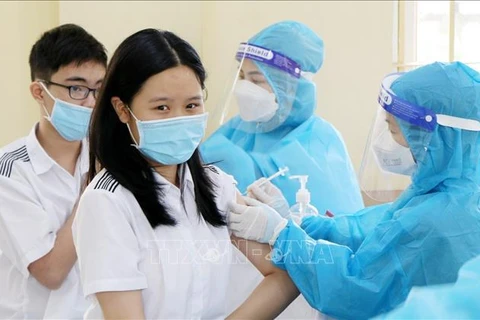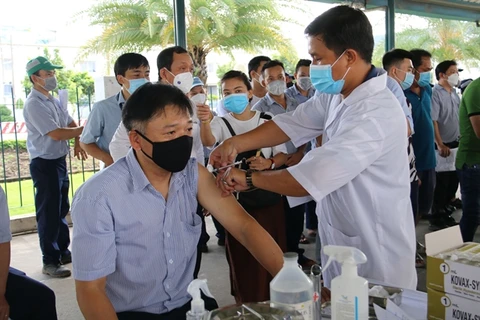Hanoi (VNA) – BA.5 and BA.4, two sub-variants of Omicron, are on the rise around the globe. They have been found in 62 and 58 countries, respectively.
According to the Ministry of Health, with vibrant travel activities now returning, and based on the circulation of previous variants, it is only a matter of time until the new variants of the coronavirus SARS-CoV-2 make their way into Vietnam.
New sub-variants can spread faster
Prof. Phan Trong Lan, Director of the Health Ministry’s Preventive Medicine Department, said some European and North American countries have recorded the BA.4 and BA.5 sub-variants of Omicron and increasing numbers of infections. In Vietnam, the BA.2 sub-variant is currently the dominant one with mild clinical symptoms. However, there is now a risk that BA.5, a new sub-variant, will take over the older strains.
However, he noted, scientists are still conducting studies to have a better understanding of this sub-variant.
Dr. Sorroco Escalante, Acting Representative of the World Health Organisation (WHO) in Vietnam, said when the virus keeps spreading, more new variants will appear. They may become more transmissible, especially when global travel is bouncing back, and cause more severe symptoms.
She noted the BA.5 and BA.4 sub-variants of Omicron tend to increase globally and have been recorded in 62 and 58 countries, respectively. In some nations, the growth of infections has also led to an increase in the number of cases needing hospitalisation and intensive care.
It is a fact that COVID-19 is not a mild disease. Even when a person is healthy, there is nothing to ensure that his/her infection will be mild, she pointed out, adding that vaccination, including the administration of booster shots, will help prevent serious symptoms that can lead to hospitalisation or death.
Getting fully vaccinated on schedule is important
WHO stressed that the COVID-19 pandemic has yet to be over, the SARS-CoV-2 virus is still spreading, and infections are growing in some places in the world.
Although the numbers of new infections and deaths of COVID-19 have reportedly continued to decline globally, there were still more than 3 million new cases and 7,000 deaths last week.
The Ministry of Health said post-COVID-19 conditions are diverse and complex. They can appear in different body systems and organs such as the respiratory, cardiovascular, digestive, and endocrine systems, kidneys, or skin. Long COVID-19 can linger for a long time, affecting people’s health and capability of returning to work or normal social activities.
The June report of the WHO Western Pacific Region showed that about 60% of infection cases suffered from post-COVID-19 conditions, and 30% was hospitalised for treating those conditions.
Analysing the role of vaccine, Assoc. Prof. Tran Dac Phu, former Director of the Preventive Medicine Department, said vaccine effectiveness could be lower in terms of Omicron, but it still works. Comparing the two waves of infections in the south last year and the north earlier this year, the numbers of infections, fatalities, and hospitalised cases were considerable in 2021, but they have decreased recently as vaccination rates climb.
It is important that vaccines help reduce the rate of severe cases and deaths, he said.
The Ministry of Health noted booster doses of COVID-19 vaccine are necessary to protect people from infection, especially severe symptoms and death, amid the appearance of new sub-variants.
On June 23, it issued guidance on the administration of the third and fourth vaccine doses for people aged 18 and above, and the third doses for those aged 12 - 17.
Many countries in the world have also been giving booster shots to adults and adolescents.
To protect the health of each people, family, and the entire community against the risk of COVID-19 reemergence, the ministry has recommended people proactively get sufficient booster doses on schedule./.


























